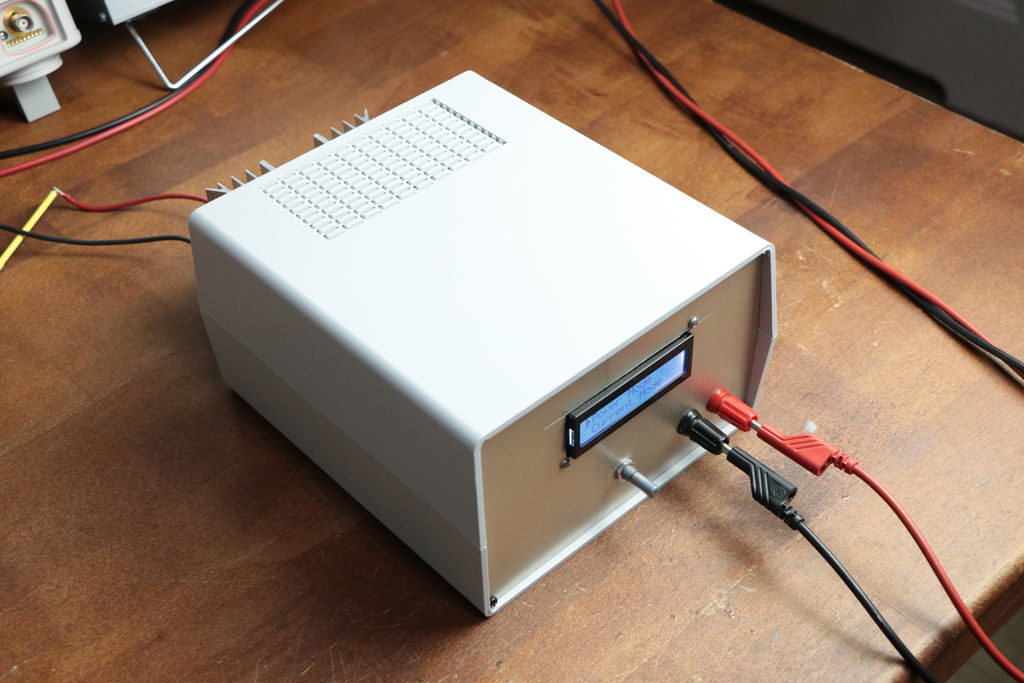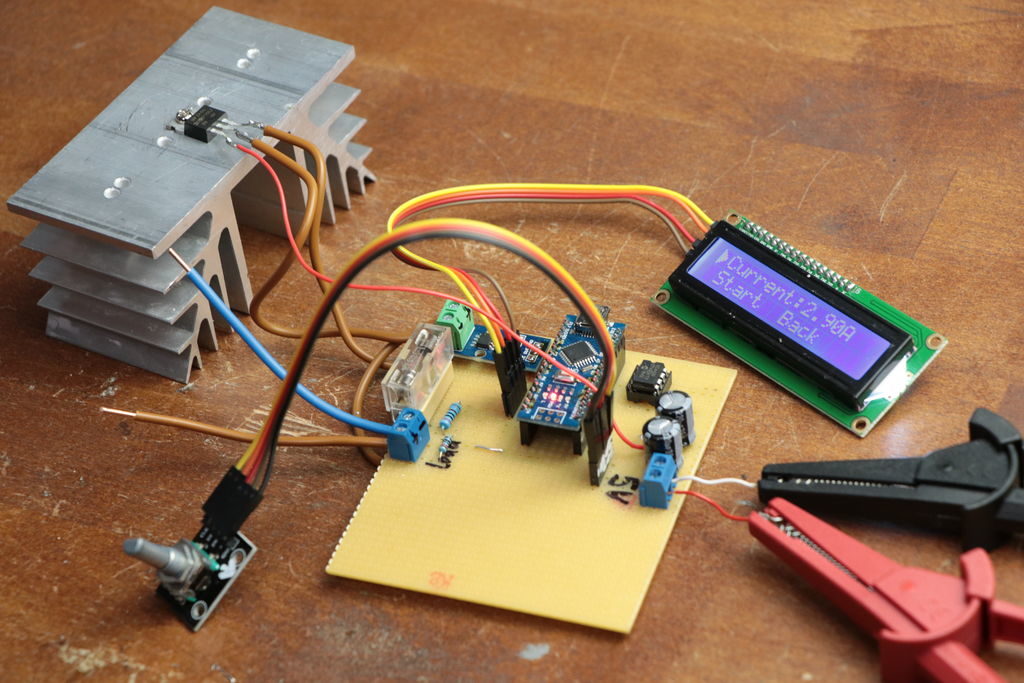Create a constant current and power load with Arduino

If you need a device which draws a certain amount of current and power for testing, then GreatScott! has just the solution.
His project uses an Arduino Nano, along with a separate IC and a voltage divider, to measure both current and voltage input from the power source. It then employs this data to properly adjust a MOSFET, dissipating the correct amount of voltage and power as required.

Interface is handled via a rotary encoder and a 16×2 I2C LCD display, and the electronics are housed in a solid-looking enclosure.
As seen in the video below, the adjustable constant load features an impressively large heat sink, needed to take care of the 30V and 20A that the setup is capable of drawing.
August 30th, 2018 at 15:03:17
Most interesting, just curious what the input voltage is drawn from. Could you expand these concepts to a LiFEPO4 12 volt battery to supply power capable of 400 watt continuous and 800 watt spike so one could power a desktop computer in a camper. The computer uses 150 watts idle and about 380 running video application maximum.
September 3rd, 2018 at 13:08:50
Dear “Nachtwache,”
I think you are confused on what this is. It draws a set number of amps or watts from the input. It does not output regulated voltage like you asked for.
“Could you expand these concepts to a LiFEPO4 12 volt battery to supply power capable of 400 watt continuous and 800 watt spike so one could power a desktop computer in a camper.”
What this would do is set a specific drain on the battery. It would not raise the voltage to 120AC like I’m guessing you thought it did. What you are looking for is a 12v inverter.
September 7th, 2018 at 07:46:44
I will try to assemble this project for the equipment of my work, thank you for the instructions
September 8th, 2018 at 03:16:59
Hi, I am Sam and I have watched all of your videos and you are my favorite YouTuber.
P.S. why a mosfet.